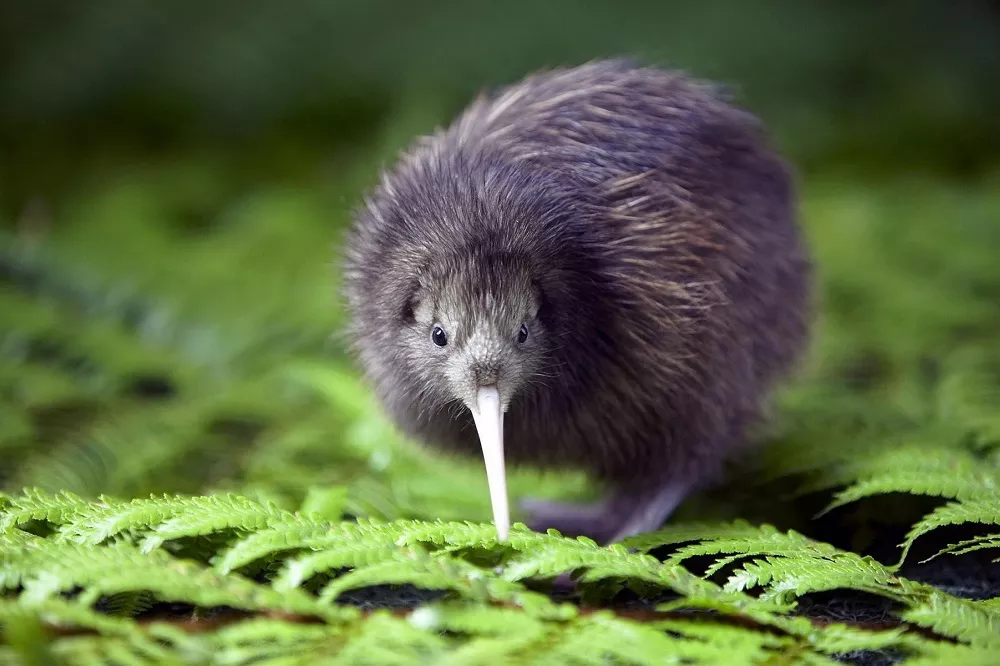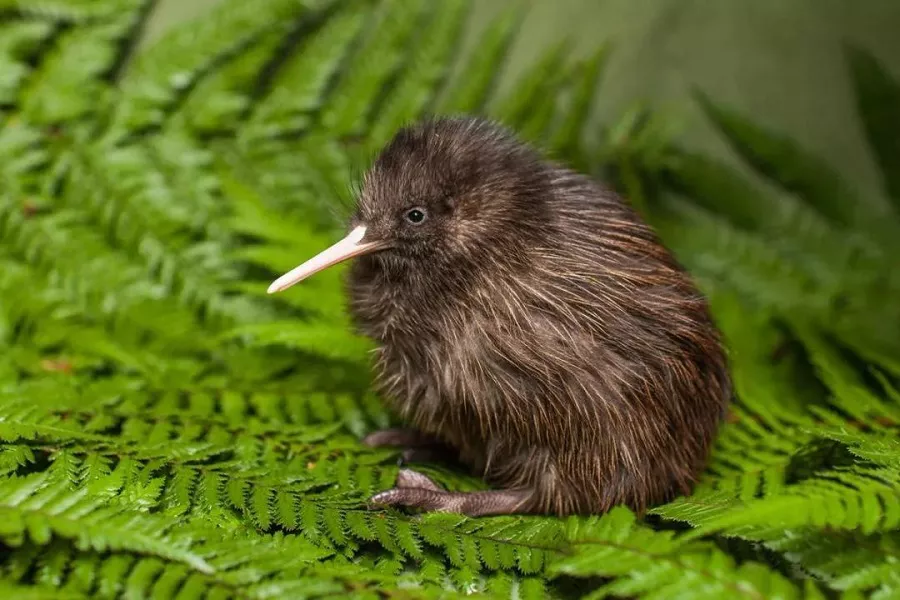The Kiwi bird is more than just a national bird of New Zealand — it is an emblem of identity, resilience, and natural heritage. Revered by locals and admired worldwide, this small, flightless bird represents the unique biodiversity of New Zealand’s isolated ecosystem. Despite its modest size and nocturnal habits, the Kiwi has achieved global recognition as one of the most extraordinary and distinctive birds on Earth.
In this article, we’ll explore everything you need to know about the Kiwi — from its evolution and biology to its cultural significance and conservation challenges.
What Is the Kiwi Bird?
The Kiwi (genus Apteryx) is a small, flightless bird native to New Zealand. It belongs to a group of birds called ratites, which also includes ostriches, emus, cassowaries, and rheas. However, unlike its larger relatives, the Kiwi is much smaller — roughly the size of a chicken.
There are five recognized species of Kiwi, each inhabiting different parts of New Zealand:
- North Island Brown Kiwi (Apteryx mantelli) – The most common species.
- Okarito Kiwi or Rowi (Apteryx rowi) – Found in limited regions on the South Island.
- Southern Brown Kiwi (Apteryx australis) – Native to the Fiordland and Stewart Island regions.
- Little Spotted Kiwi (Apteryx owenii) – The smallest Kiwi species.
- Great Spotted Kiwi (Apteryx haastii) – The largest and most robust of all species.
Each Kiwi species varies slightly in size, color, and habitat, but all share distinctive traits that set them apart from any other bird on Earth.
Physical Characteristics of the Kiwi
The Kiwi’s appearance is unlike any other bird. Its features resemble a blend of mammal and bird traits, making it one of the most unusual avian species known to science.
1. Feathers Like Hair
Kiwi feathers are soft, shaggy, and hair-like rather than sleek and aerodynamic. This gives them a furry appearance, which helps with camouflage in the dense forest floor.
2. No Tail and Tiny Wings
Kiwis have no visible tail and possess very small, vestigial wings — only about 2 centimeters long. These wings are useless for flight, a result of millions of years of evolution in a predator-free environment.
3. A Long Beak with Nostrils at the Tip
One of the Kiwi’s most distinctive features is its long, slender beak, which can reach up to 12 centimeters. Unlike most birds, whose nostrils are at the base of the beak, the Kiwi’s nostrils are located at the tip. This adaptation allows it to sniff out insects and worms underground — a rare trait among birds.
4. Strong Legs and Sharp Claws
Although flightless, Kiwis have powerful legs. They make up about one-third of the bird’s body weight, enabling it to run swiftly and defend itself with sharp claws when threatened.
5. Sensitive Whisker-Like Vibrissae
Around their beak, Kiwis have whisker-like feathers similar to those of a cat. These vibrissae help them sense their surroundings at night, as they primarily rely on smell and touch rather than sight.
Kiwi Behavior and Lifestyle
1. Nocturnal Habits
Kiwis are nocturnal birds, meaning they are active at night. Their night vision is weak, but their sense of smell and touch compensate for it. During the day, they hide in burrows or under dense vegetation to avoid predators.
2. Territorial Nature
Kiwis are highly territorial. They establish and defend large home ranges, marking their territories with distinctive calls and scents. A pair of Kiwis often mates for life and can occupy the same territory for decades.
3. Unique Communication
The Kiwi’s call is a signature sound in New Zealand’s forests. The male produces a high-pitched whistle, while the female’s call is lower and more throaty. These calls help them locate each other in the dark and defend their territories.
4. Diet and Feeding
Kiwis are omnivorous but mainly feed on invertebrates. Their diet includes:
- Earthworms
- Beetles and larvae
- Spiders
- Small snails
- Fruits and berries
They use their long beaks to probe the soil, detecting prey through smell and vibration. When a Kiwi senses movement underground, it quickly digs with its beak and consumes the prey whole.
Reproduction and Life Cycle
Kiwi reproduction is remarkable for several reasons. They lay some of the largest eggs relative to body size of any bird in the world. A single Kiwi egg can weigh up to 20% of the female’s body weight — equivalent to a human woman giving birth to a six-year-old child!
1. Mating and Pair Bonds
Kiwis typically form monogamous pairs that mate for life. Courtship involves calling, chasing, and mutual preening. The male and female share a strong bond and remain together for decades unless one dies.
2. Egg Laying and Incubation
The female lays one large egg per clutch, sometimes two. After laying, the male usually takes over incubation duties. The incubation period lasts around 70 to 80 days, one of the longest among birds.
3. Chick Development
Unlike many bird species, Kiwi chicks hatch fully feathered and self-sufficient. They leave the burrow within a week to find food on their own, relying on their natural instincts for survival.
Habitat and Distribution
Kiwis inhabit a range of environments across New Zealand, including native forests, scrublands, grasslands, and wetlands. Each species prefers a specific habitat:
- North Island Brown Kiwi: Lowland and submontane forests.
- Okarito Kiwi: Dense, temperate rainforest in Westland.
- Southern Brown Kiwi: Forested and coastal areas of Fiordland and Stewart Island.
- Great Spotted Kiwi: Mountainous regions with alpine scrub.
- Little Spotted Kiwi: Offshore sanctuaries and predator-free islands.
Historically, Kiwis thrived across both islands of New Zealand, but human activity and introduced predators have dramatically reduced their range.
Cultural Significance of the Kiwi
The Kiwi is deeply woven into New Zealand’s cultural identity. It is not only the national bird but also a national symbol representing the people and the land.
1. Symbol of New Zealanders
New Zealanders are affectionately known as “Kiwis” — a nickname that dates back to World War I when New Zealand soldiers were called “Kiwis” by their allies. The name stuck and has since become a point of national pride.
2. Importance in Māori Culture
For the Māori people, the Kiwi holds sacred meaning. It is considered taonga (a treasured species) and is featured in many traditional legends and carvings. The Kiwi’s feathers were once used in ceremonial cloaks (kahu kiwi), symbolizing prestige and honor.
3. National Emblem
The Kiwi appears on New Zealand currency, military insignia, and official logos. Its image is instantly recognizable as a symbol of the nation’s unique wildlife and identity.
Threats to Kiwi Survival
Despite its cultural significance, the Kiwi faces serious threats in the wild. Its population has declined drastically over the last century, and without conservation efforts, several species could face extinction.
1. Predators
The introduction of mammals such as stoats, ferrets, dogs, and cats has been devastating. Kiwi chicks are especially vulnerable, with up to 90% of them killed by predators before reaching adulthood in unprotected areas.
2. Habitat Loss
Deforestation, land development, and agriculture have destroyed large portions of the Kiwi’s natural habitat. Fragmented landscapes make it harder for Kiwis to find mates and suitable nesting sites.
3. Climate Change
Changing weather patterns and rising temperatures threaten Kiwi habitats, particularly in coastal and lowland regions. Shifts in soil moisture also affect the availability of invertebrates — their main food source.
Kiwi Conservation Efforts
Fortunately, New Zealand has launched extensive conservation programs to protect its national bird.
1. Operation Nest Egg (ONE)
This successful program involves collecting Kiwi eggs from the wild, incubating them in controlled environments, and raising chicks until they are large enough to survive predator attacks. Once mature, they are released back into protected habitats.
2. Predator-Free New Zealand 2050
A government initiative aiming to eliminate invasive predators like rats, stoats, and possums by 2050. This ambitious project could transform the future of Kiwi conservation.
3. Community and Private Sanctuaries
Dozens of community-led sanctuaries, such as Zealandia in Wellington and Orokonui in Otago, provide safe, predator-free environments for Kiwi populations to thrive.
4. Public Awareness Campaigns
Organizations like Save the Kiwi and Department of Conservation (DOC) conduct educational campaigns to promote responsible pet ownership and habitat preservation.
Thanks to these efforts, several Kiwi populations are now stabilizing or even increasing — a promising sign for the species’ future.
Interesting Facts About the Kiwi
- The Kiwi has bone marrow like mammals, not hollow bones like most birds.
- Kiwis have poor eyesight but an excellent sense of smell.
- The Kiwi egg is six times larger than a chicken egg relative to body size.
- A Kiwi’s body temperature is lower than most birds, closer to that of a mammal.
- Kiwis live long lives — up to 30 to 50 years in the wild.
Conclusion
The Kiwi is far more than New Zealand’s national bird — it is a living treasure and a symbol of the country’s identity, culture, and environmental values. From its unique biology and nocturnal lifestyle to its cultural importance and conservation story, the Kiwi captures the spirit of New Zealand itself: rare, resilient, and remarkable.
As efforts to protect and restore Kiwi populations continue, the bird remains a powerful reminder that even the smallest, most unassuming creatures can become icons of national pride and global admiration.
Preserving the Kiwi means preserving the heart of New Zealand — a commitment to nature, culture, and the shared responsibility to protect what makes our world truly unique.
FAQs About New Zealand’s National Symbols
What is New Zealand’s National Flower?
New Zealand’s national flower is the Kōwhai (Sophora microphylla). Known for its striking yellow blossoms, the Kōwhai is native to New Zealand and blooms in early spring. Its flowers are an important food source for native birds like the tui and bellbird. The Kōwhai symbolizes beauty, growth, and the natural richness of the country’s landscape.
What is New Zealand’s National Tree?
The Silver Fern (Cyathea dealbata) is widely recognized as New Zealand’s national tree and emblem. Its silver-white underside has made it a national symbol of strength, resilience, and identity. The Silver Fern is prominently featured on New Zealand’s sports uniforms, military insignia, and national branding.
What is New Zealand’s National Fruit?
The Kiwifruit (originally known as the Chinese gooseberry) is regarded as New Zealand’s national fruit. Although it was first cultivated in China, New Zealand popularized and renamed it in the 20th century. Today, the kiwifruit is one of the country’s top exports, symbolizing freshness, vitality, and innovation in agriculture.
What is New Zealand’s National Animal?
New Zealand’s national animal is the Kiwi bird (Apteryx spp.). This small, flightless bird is unique to New Zealand and is a national icon. The kiwi represents the country’s distinct wildlife and is so culturally significant that New Zealanders themselves are affectionately called “Kiwis.”
What is New Zealand’s National Food?
New Zealand does not have an official national dish, but several foods are widely celebrated as national favorites. Pavlova, a light meringue-based dessert topped with fresh fruit and cream, is one of the country’s most iconic treats. Savory meat pies are another staple, enjoyed across all regions.





 Facebook
Facebook  Instagram
Instagram  Youtube
Youtube 